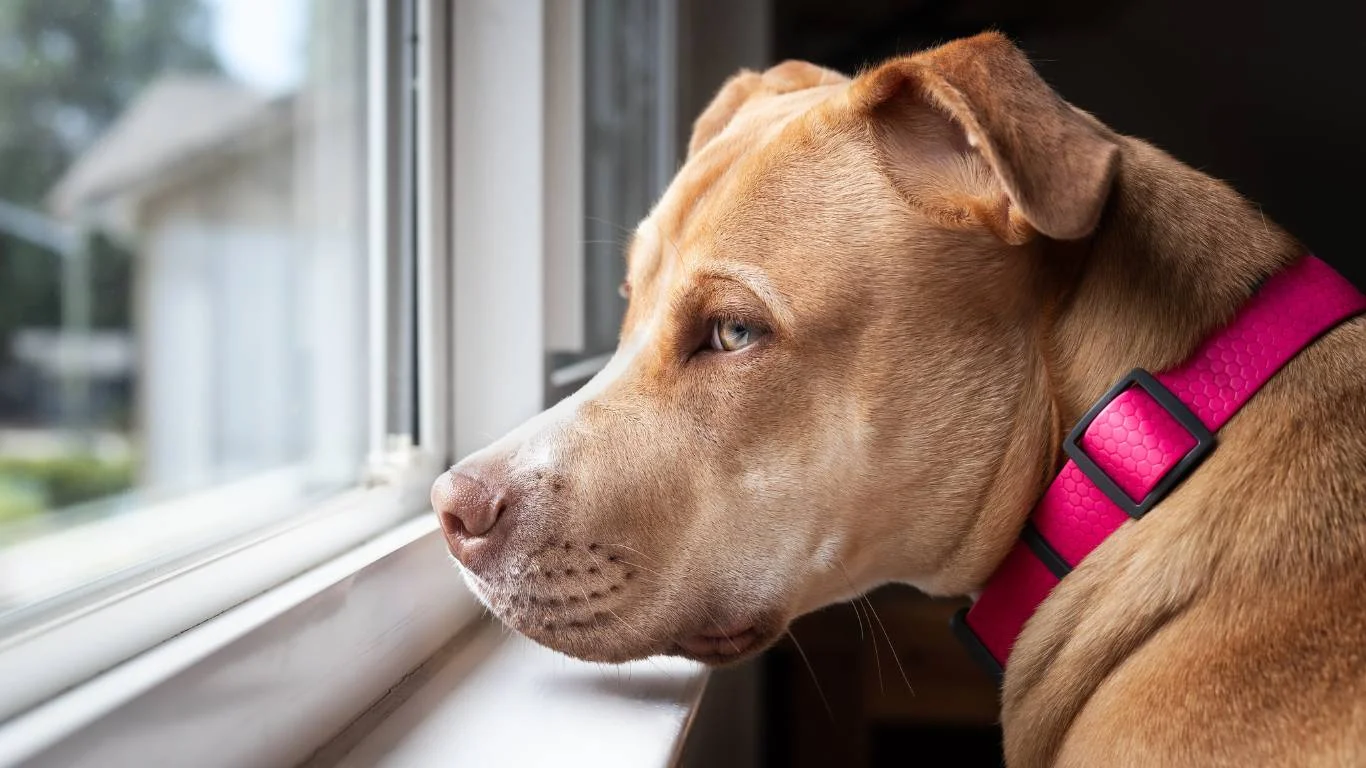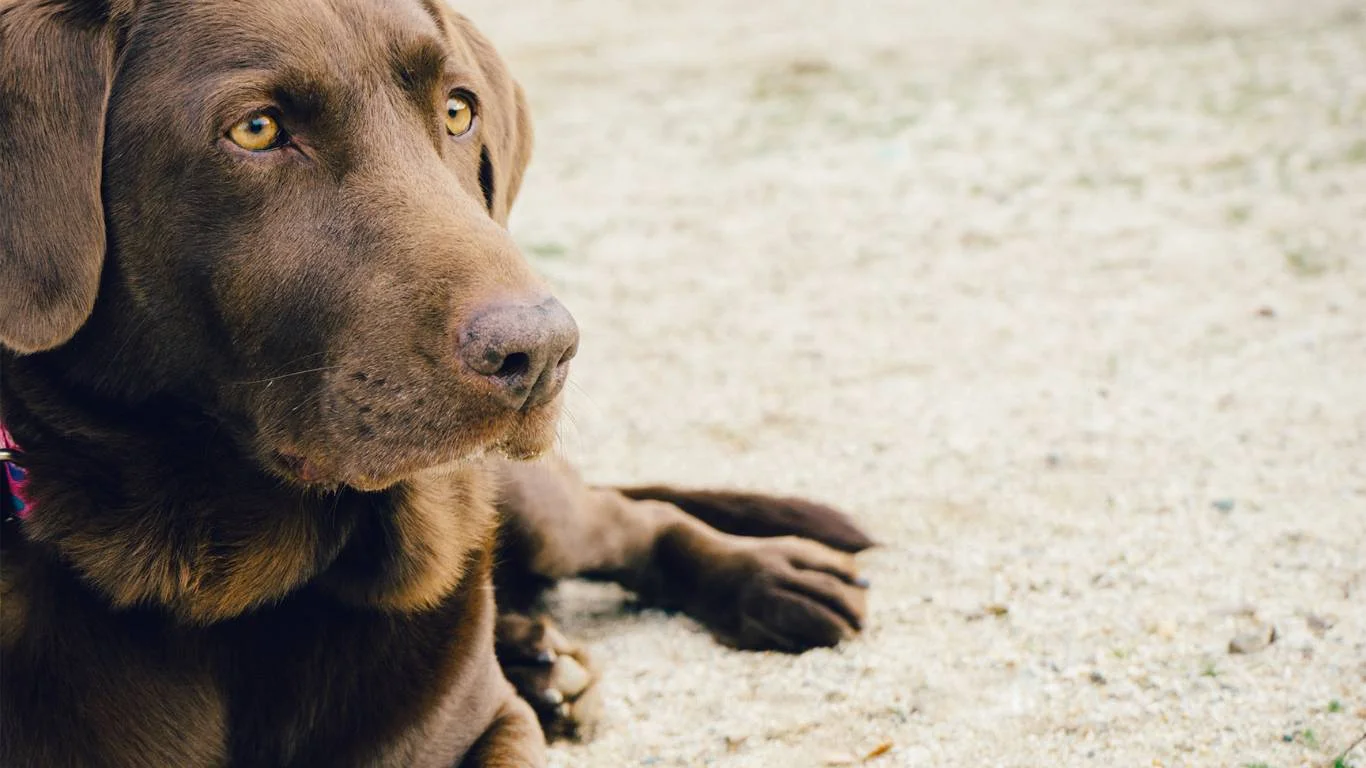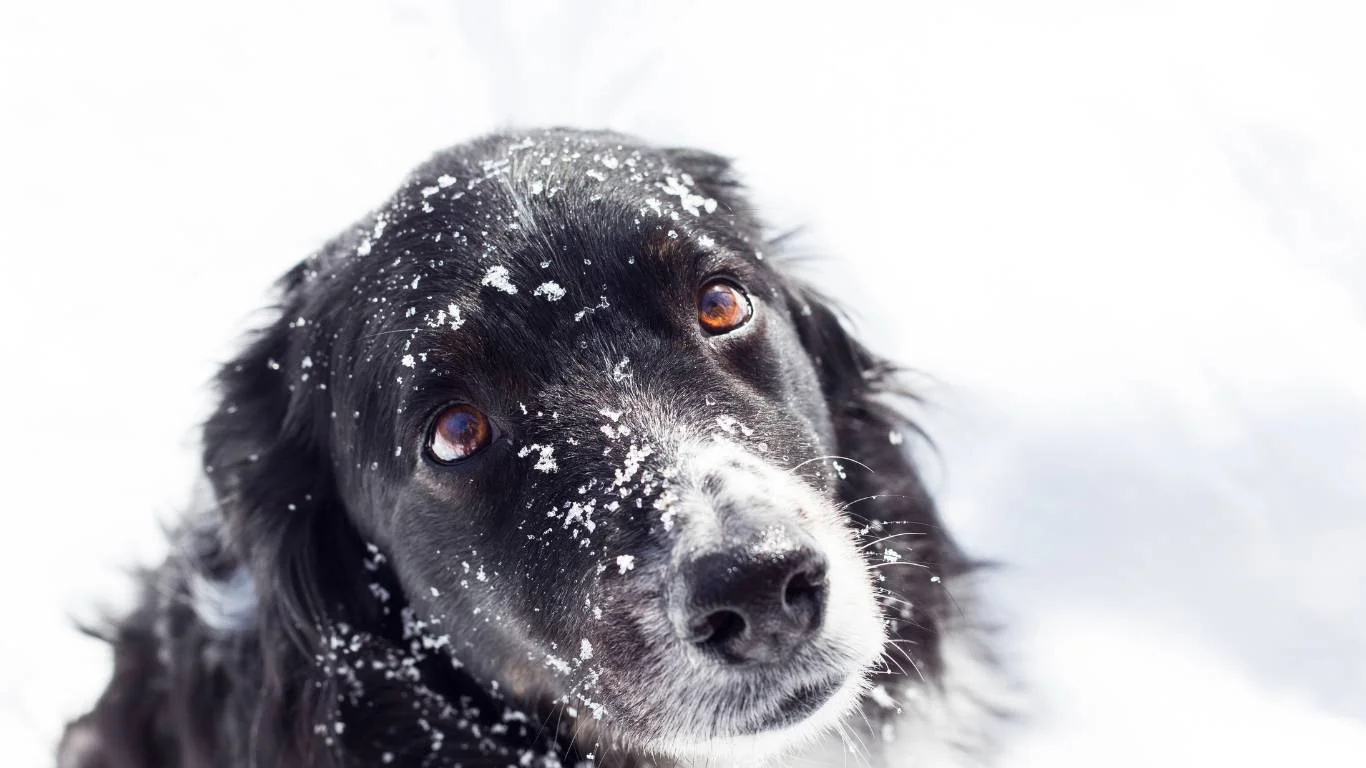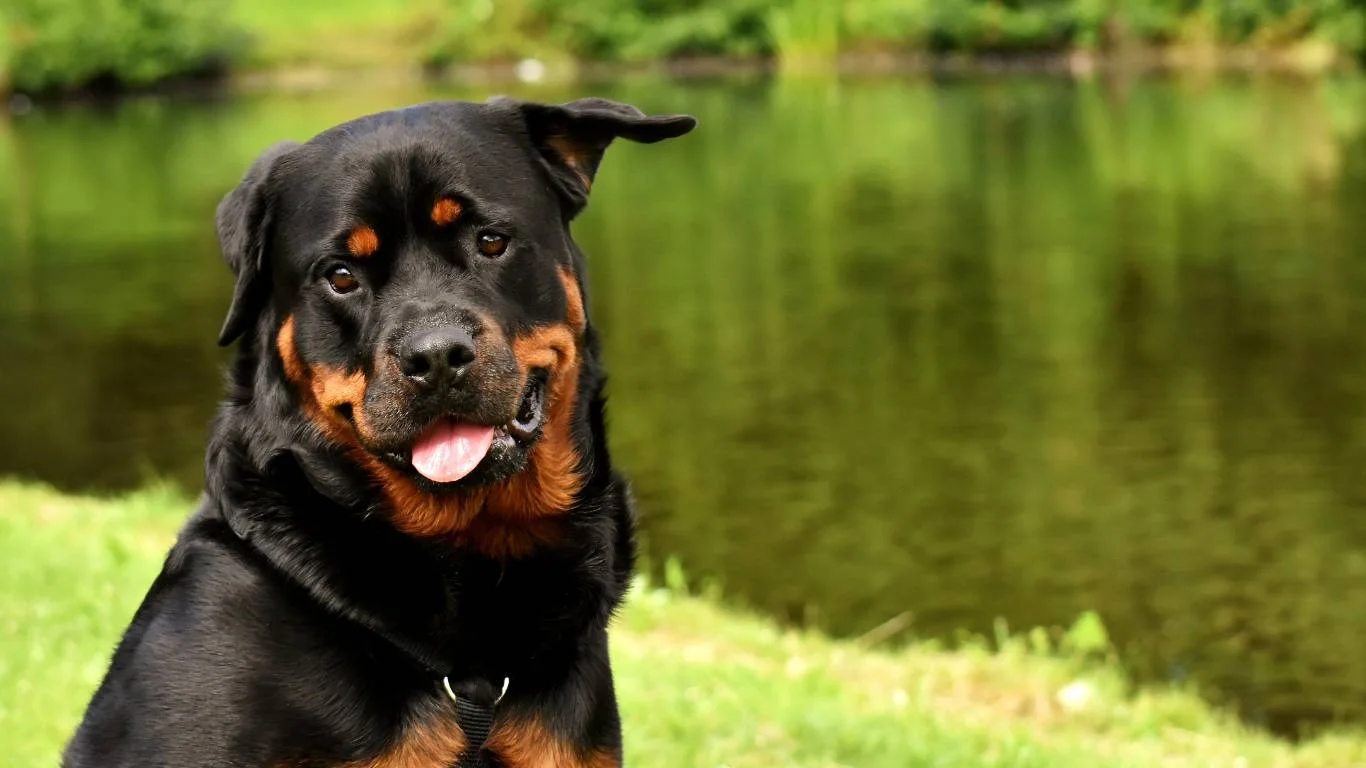How to Tell if Your Dog Has a Spinal Injury: Warning Signs to Watch Out For
As a veterinary assistant with a special focus on nutrition, I’ve seen plenty of dogs come in with various injuries and ailments. But one that always brings about worry is a spinal injury. If you’re wondering how to tell if your dog has a spinal injury, you’re not alone. Many pet parents panic at the first sign of something being wrong, and rightfully so. Our dogs rely on us to spot the signs and symptoms early, and knowing the signs of a spinal injury can help you get them the treatment they need as soon as possible. In this article, we’ll dive into the symptoms and warning signs that could indicate your dog has suffered a spinal injury, and what steps to take next. Trust me, the sooner you can identify the problem, the better the chances are for a full recovery.
Understanding Spinal Injuries in Dogs
Spinal injuries in dogs are more common than many people realize. Whether caused by trauma (like being hit by a car), slipping or falling, or degenerative conditions, spinal injuries can lead to serious health issues if left untreated. But the thing about spinal injuries is that they can be tricky to spot, especially in the early stages. As a vet assistant, I’ve seen dogs come in with subtle signs, so recognizing these early on is key.
Before diving into the symptoms, let’s take a brief look at what happens when a dog experiences a spinal injury. The spine consists of bones (vertebrae), nerves, and discs that help support the dog’s movements. When any of these structures is damaged, it can affect the dog’s ability to move or even cause pain. The injury could be minor, like a sprain, or more severe, like a herniated disc, which might lead to paralysis in some cases. However, no matter how severe, identifying the injury early is crucial in getting the dog proper treatment.
Common Symptoms of a Spinal Injury in Dogs

When you’re dealing with a dog that might have a spinal injury, there are a few key signs and symptoms to look for. Some of these can be subtle, and others might be very obvious. Here are a few of the most common signs I’ve seen in my time working in the clinic:
- Unexplained Limping or Lameness: This is one of the first things pet owners notice. If your dog is limping or dragging a leg, it could be due to a spinal injury affecting the nerves that control leg movement.
- Difficulty Moving: If your dog is hesitant to walk, jump, or even get up from a sitting position, this can be a sign of discomfort or pain due to spinal injury.
- Wobbly or Unsteady Gait: A dog with a spinal injury might seem uncoordinated or have trouble maintaining balance. This could be a sign of nerve damage affecting their sense of movement.
- Yelping or Whining When Touched: If your dog is sensitive to touch, especially along their back or spine, it’s a red flag. They may react sharply to being handled in certain ways, particularly around the injury site.
- Loss of Bladder or Bowel Control: In severe cases, spinal injuries can cause incontinence, meaning your dog might have accidents in the house that are uncharacteristic for them.
- Muscle Atrophy: Over time, a lack of use due to pain or paralysis can lead to muscle wasting, especially in the legs.
Signs of Pain
If you suspect that your dog has a spinal injury, one of the most important things to look for is signs of pain. Dogs are usually pretty good at hiding discomfort, but there are some common signs that could indicate they’re in pain:
- Panting: Dogs will pant when they’re in pain or distress. If your dog is panting excessively, especially when they’re not doing any physical activity, it might be a sign of pain.
- Growling or Snapping: Some dogs might become more aggressive or defensive if they’re in pain. If your dog, who’s usually sweet-tempered, starts growling or snapping when you try to pet them, this could be a reaction to pain.
- Changes in Posture: If your dog is arching their back or holding their head low to the ground, they might be trying to protect their spine and avoid further injury.
How to Tell if Your Dog Has a Spinal Injury

Now, let’s address the question directly: how can you tell if your dog has a spinal injury? There are several steps you can take to observe and assess your dog’s condition. The most important thing is to remain calm and take note of the symptoms I mentioned earlier. Here’s a step-by-step process that I use in the clinic when assessing a dog for a spinal injury:
- Observe Their Movement: Take note of how your dog is walking. Is there a limp? Are they hesitant to move? Are they favoring one leg or holding their body stiffly? Keep an eye on their gait and behavior.
- Check for Sensitivity: Gently touch different parts of your dog’s back and spine, paying close attention to their reaction. If your dog flinches, yelps, or withdraws when you touch certain areas, it could indicate a problem.
- Look for Other Symptoms: Keep an eye out for symptoms like incontinence, difficulty eating, or signs of muscle weakness. These can all be associated with a spinal injury.
- Consult a Veterinarian: If you notice any of these signs or if your dog seems to be in pain, it’s best to consult with a veterinarian as soon as possible. They may recommend diagnostic tests, such as X-rays, MRIs, or CT scans, to confirm whether a spinal injury is present and determine the severity.
What to Do if You Suspect a Spinal Injury
If you’re worried that your dog has suffered a spinal injury, it’s important to act quickly. Here are some steps to take:
- Limit Their Movement: Until you can get to the vet, limit your dog’s movement to avoid further damage. Try to keep them in a confined space, and avoid letting them run, jump, or climb stairs.
- Manage Pain: Do not give your dog any human pain medication, as some can be toxic to dogs. If your dog is in visible pain, call your vet to discuss pain management options.
- Get Veterinary Help: Take your dog to the vet for an evaluation. If it’s a spinal injury, your vet will likely recommend further diagnostic tests and discuss treatment options.

Diagnosis of Spinal Injuries in Dogs
If you’ve followed the steps outlined in the previous section and suspect that your dog has a spinal injury, the next step is to get a proper diagnosis from a veterinarian. In my experience, it’s easy to worry when our furry friends seem to be in pain, but getting an accurate diagnosis can provide peace of mind and help you understand how to move forward with treatment. Here’s a closer look at how vets typically diagnose spinal injuries in dogs:
First off, your veterinarian will conduct a thorough physical examination. This often includes palpating (feeling) your dog’s spine and back muscles to identify areas of pain or tenderness. They will also check for any abnormal reflexes or signs of nerve damage, such as decreased sensation or weakness in the limbs. It’s always best to have your dog calm and relaxed during this examination, so be sure to keep them comfortable.
Next, depending on the physical exam, your vet may recommend diagnostic imaging. This could include:
- X-rays: The most common and accessible form of imaging. X-rays can help detect fractures, misalignments, and other visible signs of injury to the bones and joints in the spine.
- MRI (Magnetic Resonance Imaging): For soft tissue injuries like herniated discs, an MRI is a more effective tool. It allows the vet to see the spinal cord, discs, and nerves in great detail.
- CT scan (Computed Tomography): A CT scan provides a 3D view of the spine and can help identify any abnormalities in the spinal canal or surrounding tissues.
Once the results are in, your veterinarian will discuss the severity of the injury and recommend a treatment plan based on the findings. If the injury is caught early, surgery might not be necessary, and a combination of rest and pain management could do the trick. But in more severe cases, surgery may be required to repair the damage to the spine.
Treatment Options for Spinal Injuries in Dogs

Treating spinal injuries in dogs can vary widely depending on the severity of the injury, your dog’s overall health, and how early the condition was detected. In my time as a veterinary assistant, I’ve seen a wide range of treatment plans tailored to each dog’s unique situation. While some dogs recover with conservative treatment, others require surgical intervention. Let’s take a look at some common treatment options.
Conservative Treatment
For less severe spinal injuries, your vet might recommend conservative treatment. This often includes a combination of bed rest, pain management, and physical therapy. Depending on the injury, your vet may advise:
- Strict Rest: This might mean limiting your dog’s movements, including no jumping or running, and providing a comfortable, confined space where they can rest. For some dogs, several weeks of rest can be enough to allow their spine to heal.
- Pain Medication: Your vet will likely prescribe pain relievers, anti-inflammatory drugs, and sometimes muscle relaxers to help manage pain and inflammation. Never administer over-the-counter human medications to your dog without vet approval!
- Physical Therapy: Once your dog is stable, physical therapy may be recommended to help them regain strength and mobility. This can include gentle exercises, swimming, or even massage therapy to reduce stiffness and help with muscle recovery.
In my experience, many dogs respond well to this type of treatment. However, some dogs require more intensive care, especially if the injury is more severe or if they’re at risk of permanent nerve damage.
Surgical Treatment
In cases of severe spinal injuries, surgery may be necessary to repair the damage. This is typically the case if there’s significant compression on the spinal cord, a herniated disc, or a fracture that requires realignment. There are a variety of surgical options available, and the specific procedure will depend on the injury and your dog’s individual needs.
- Disc Surgery: If the injury is due to a herniated disc that’s pressing on the spinal cord, surgery may be required to remove or reposition the disc. This can help relieve pressure on the nerves and prevent further damage.
- Spinal Stabilization: For fractures or dislocations in the spine, surgery may involve stabilizing the spine with pins, screws, or plates to help it heal properly.
- Decompression Surgery: If the spinal cord is being compressed by tissue, bone, or herniated discs, decompression surgery can help alleviate the pressure, reducing pain and restoring function.
After surgery, the recovery process typically involves strict rest, physical therapy, and monitoring to ensure your dog heals properly. I’ve seen some amazing recovery stories where dogs who had difficulty walking post-surgery went on to regain full mobility with time, dedication, and proper care.
How to Support Your Dog During Recovery

Whether your dog is undergoing conservative treatment or recovering from surgery, there are several things you can do to support their recovery. Having worked with many dogs in recovery, here are some of the tips I recommend:
- Provide a Comfortable Recovery Area: Set up a quiet, comfortable space for your dog to rest. This area should be free from distractions and hazards, and it should allow them to lie down and sleep comfortably.
- Monitor for Changes: Keep an eye on any changes in your dog’s behavior, appetite, or pain level. If you notice any setbacks, contact your vet right away.
- Follow the Vet’s Instructions: Make sure you stick to the recovery plan your vet has outlined. This includes administering medications, limiting activity, and scheduling follow-up appointments for progress checks.
- Consider a Mobility Aid: Some dogs may need extra help getting around during recovery. There are plenty of mobility aids, such as slings, harnesses, or carts, that can help your dog move safely and comfortably.
With patience and the right care, many dogs recover fully from spinal injuries. The recovery process might take time, but with love, attention, and veterinary guidance, you can help your dog regain strength and live a happy, active life once again.
When to Seek Immediate Veterinary Attention

As much as we hope for a simple fix, there are times when immediate veterinary attention is necessary. If your dog is showing signs of a severe spinal injury, such as loss of coordination, inability to move, or paralysis, it’s crucial to seek emergency care as soon as possible. Delaying treatment could result in permanent damage to your dog’s nerves, so don’t hesitate if you’re concerned.
It’s always better to be safe than sorry when it comes to our pets, especially when dealing with something as serious as a spinal injury. Keep an eye on your dog’s symptoms, and if they seem to be in distress, don’t wait. Get them to a vet quickly to ensure they get the care they need.
Preventing Spinal Injuries in Dogs
As a veterinary assistant, I’ve always been a big advocate for prevention, especially when it comes to something as serious as spinal injuries in dogs. While you can’t completely eliminate the risk, there are several things you can do to reduce the chances of your dog suffering from a spinal injury. The key is understanding the potential risks and taking proactive steps to protect your dog. Here’s what I’ve learned over the years:
Regular Exercise and Weight Management
One of the easiest ways to help prevent spinal injuries is to keep your dog at a healthy weight and ensure they get regular exercise. Obesity can put extra strain on your dog’s joints and spine, which can increase the risk of injury. Keeping your dog fit with regular, low-impact exercise—like daily walks, swimming, or even light play—can help maintain muscle strength and support spinal health.
As I’ve seen in my experience working with both large and small dogs, regular movement helps maintain flexibility in the spine, reduces stiffness, and ensures that muscles stay strong. Make sure you’re feeding your dog a balanced, nutritious diet, and talk to your vet about a weight management plan if your dog is carrying extra pounds.
Safe Play and Avoiding High-Risk Activities
Another area to be mindful of is how your dog plays and exercises. While it’s tempting to let them run wild in the backyard or at the park, dogs can injure themselves during rough play or high-impact activities, especially if they’re jumping from high places or running at full speed on hard surfaces. For instance, large breeds like German Shepherds or Labrador Retrievers are particularly vulnerable to spinal issues due to their size and weight.
If your dog is particularly energetic, consider more controlled activities that focus on their balance and coordination. Swimming, for example, is fantastic for dogs with joint or spinal concerns because it strengthens muscles without putting undue pressure on the spine. Try to avoid extreme activities, such as jumping off furniture, climbing stairs too quickly, or engaging in rough play that can result in sudden twists or falls.
Rehabilitation and Long-Term Care After a Spinal Injury

If your dog has already suffered a spinal injury, rehabilitation is key to helping them recover and regain strength. The recovery journey can be long and challenging, but it’s also rewarding to watch your dog regain mobility. Here’s what you need to know about supporting your dog’s recovery in the long term:
Physical Therapy and Rehab
Physical therapy plays an important role in your dog’s recovery, especially if they’ve had surgery or a major injury. Dogs often need rehab to regain muscle strength, balance, and coordination. Rehab can include a variety of activities, from walking on a leash to more specialized exercises like hydrotherapy, which involves using water resistance to build muscle strength without overloading the spine.
I’ve seen firsthand how physical therapy helps dogs improve their mobility and quality of life. Hydrotherapy is especially popular because it’s gentle on the joints and provides a full-body workout that helps your dog stay active while minimizing the risk of re-injury. As part of rehab, you may also need to assist your dog with walking or even using a sling to support their hind legs.
Monitoring for Setbacks
While most dogs recover well from spinal injuries, some may experience setbacks. It’s important to watch for signs that your dog might be struggling, such as signs of pain, reluctance to move, or difficulty with basic activities like eating or drinking. If you notice any of these changes, reach out to your vet for guidance on what to do next.
Some spinal injuries, particularly those involving nerve damage, may take longer to heal. Be patient with your dog during this process, and stay in close contact with your vet to ensure that your dog is recovering appropriately. With ongoing care, many dogs can regain mobility and live a normal, happy life again.
When to Consult a Veterinarian Again
Even after your dog has recovered from their spinal injury, it’s important to continue monitoring their health. Spinal injuries can sometimes have long-term effects, such as arthritis or mobility issues that might require ongoing care. If you notice any signs that your dog is struggling or their condition is worsening, don’t hesitate to consult your veterinarian again. Regular check-ups can help catch any underlying issues early on, preventing them from escalating.
Veterinarians may also recommend follow-up imaging tests, such as X-rays or MRIs, to check the healing progress of the spine or detect any potential complications. Early intervention can make a world of difference when it comes to preventing further damage or discomfort for your dog.
Additional Resources and Support

If you’re looking for more information on spinal injuries in dogs, there are a variety of reliable resources that can provide additional guidance. Trusted veterinary websites like PetMD and The American Kennel Club (AKC) offer articles and expert advice on dog health. For more detailed information on rehabilitation and recovery, you might want to check out professional services that specialize in canine physical therapy, such as the AKC Canine Health Foundation for resources on the best ways to care for your dog after an injury.
Disclaimer
The information provided in this article is for educational purposes only and is not intended to replace professional veterinary advice. Always consult with a qualified veterinarian for the diagnosis, treatment, and care of your dog’s specific health needs. Spinal injuries in dogs can vary greatly in severity, and it is crucial to work with a veterinarian who can provide personalized care for your pet.
If you’re ever in doubt, seeking immediate veterinary attention can often make a significant difference in your dog’s recovery process. Your veterinarian is the best source for tailored recommendations and treatment plans based on your dog’s health and needs.






